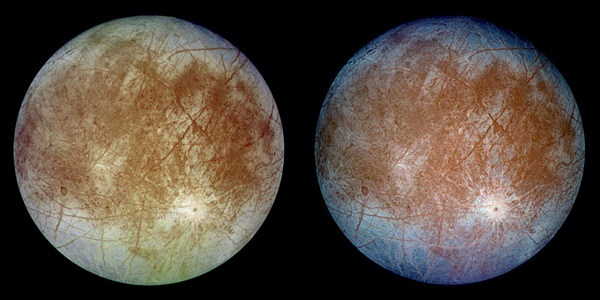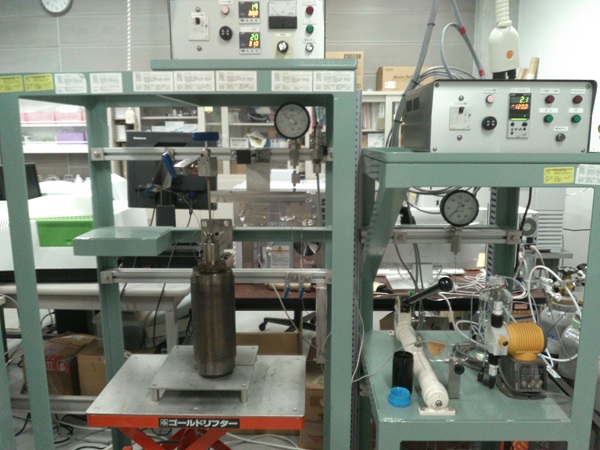Europa is a Jupiter’s icy satellite that is known to possess a subsurface ocean and attracts attention because of the habitability. Europa is known to be polluted by exogenic sulfate supplied from volcanos of the inner satellite Io; however, Europa’s surface contains NaCl salts, suggesting Na and Cl would be the main dissolved species of the ocean. The research team shows that hydrothermal activity of sulfate reduction on the seafloor is necessary to remove exogenic sulfate from the ocean and keep Na and Cl as the major species. Hydrothermal activity could support life through providing a reductant.

Europa is a Jupiter’s icy satellite that possess a subsurface ocean. This icy moon has attracted a lot of attention because of the potential habitability; however, geochemical processes occurring in the subsurface ocean are largely unknown. What are the major dissolved species of Europa’s ocean? Is there any hydrothermal activity on the seafloor? If so, what type of rocks could host the hydrothermal system? These questions are critical to constrain the possible ecosystem there but remain unsolved due to lack of factual evidence.
The research team focuses on the fate of exogenic sulfate that is supplied to Europa. Europa is known to be polluted by exogenic sulfate supplied from volcanos of the inner satellite Io. On the other hand, NaCl salts are observed on Europa’s surface via ground-based telescope observations, suggesting Na and Cl would be the main dissolved species of the ocean. Given the fact that exogenic sulfate would be continuously supplied to Europa, its ocean should be sulfate-rich ocean. Thus, the observations of NaCl on Europa posed a question why exogenic sulfate is missing in Europa’s ocean.
The study shows that hydrothermal activity of sulfate reduction on the seafloor is necessary to remove exogenic sulfate from the ocean and keep Na and Cl as the major species. The research team has newly developed an experimental system that can simulate Europa’s hydrothermal conditions (~1000 bars or above). They show that hydrothermal sulfate reduction occurs very effectively to remove sulfate from the ocean if the seafloor rock is composed of igneous basalt. In other words, these results imply that the presence of NaCl suggests the occurrence of basalt-hosted hydrothermal system within Europa. Such hydrothermal activity supported by mafic basalt could provide abundance of reductant, such as H2, possibly supporting chemoautotrophic life.
| Journal | Icarus |
| Tile of the paper | The role of hydrothermal sulfate reduction in the sulfur cycles within Europa: Laboratory experiments on sulfate reduction at 100 MPa |
| Authors | Shuya Tana,b*, Yasuhito Sekinea,c, Takazo Shibuyad, Chihiro Miyamotob, Yoshio Takahashib |
| Affiliations | a. Earth-Life Science Institute (ELSI), Tokyo Institute of Technology, Tokyo, Japan b. Department of Earth and Planetary Science, The University of Tokyo, Tokyo, Japan c. Institute of Nature and Environmental Technology, Kanazawa University, Kanazawa, Japan d. Super-cutting-edge Grand and Advanced Research (SUGAR) Program, Institute for Extra-cutting-edge Science and Technology Avant-garde Research (X-star), Japan Agency for Marine-Earth Science and Technology (JAMSTEC), Yokosuka, Japan |
| DOI | 10.1016/j.icarus.2020.114222 |
| Online published date | 23 November 2020 |

